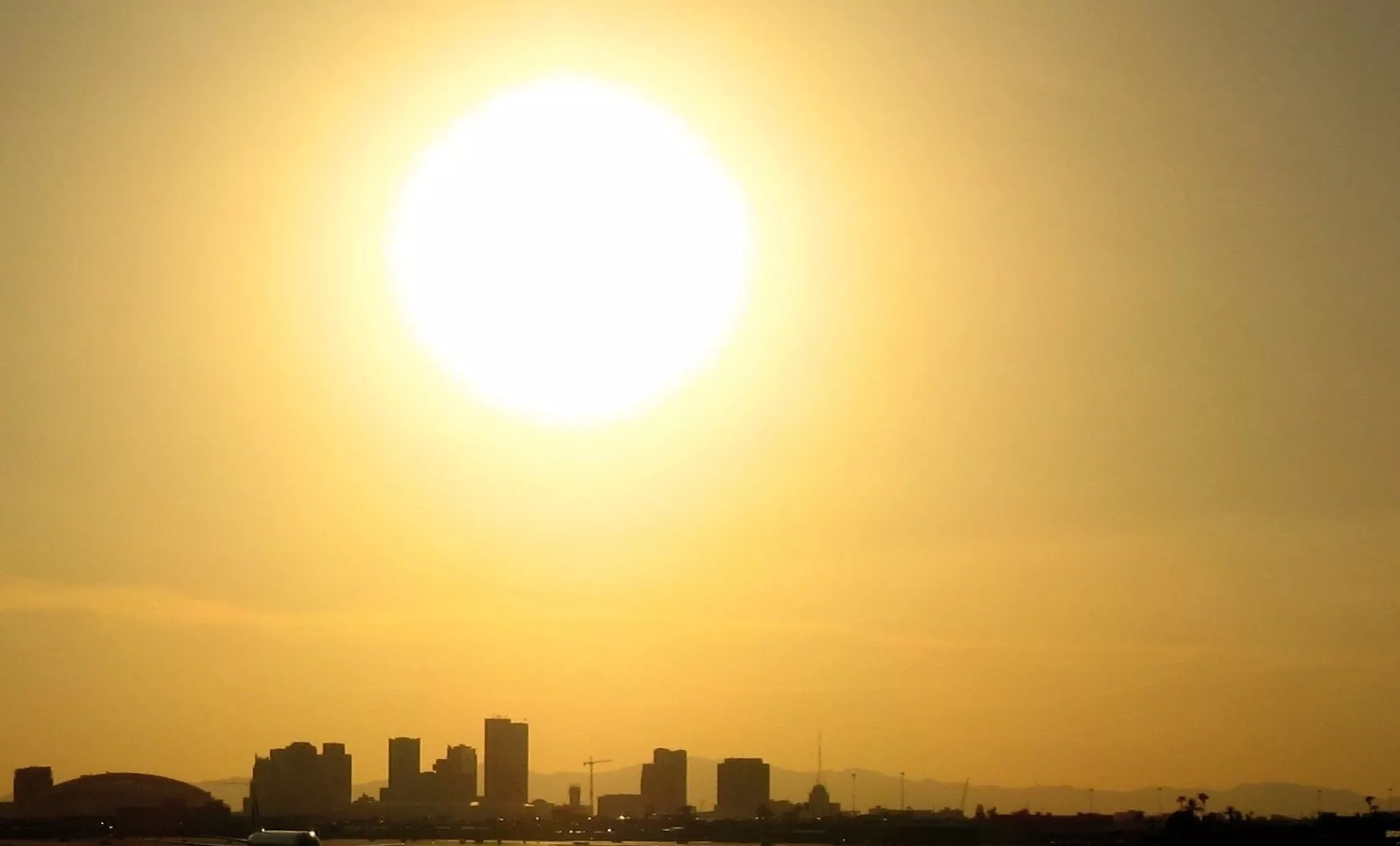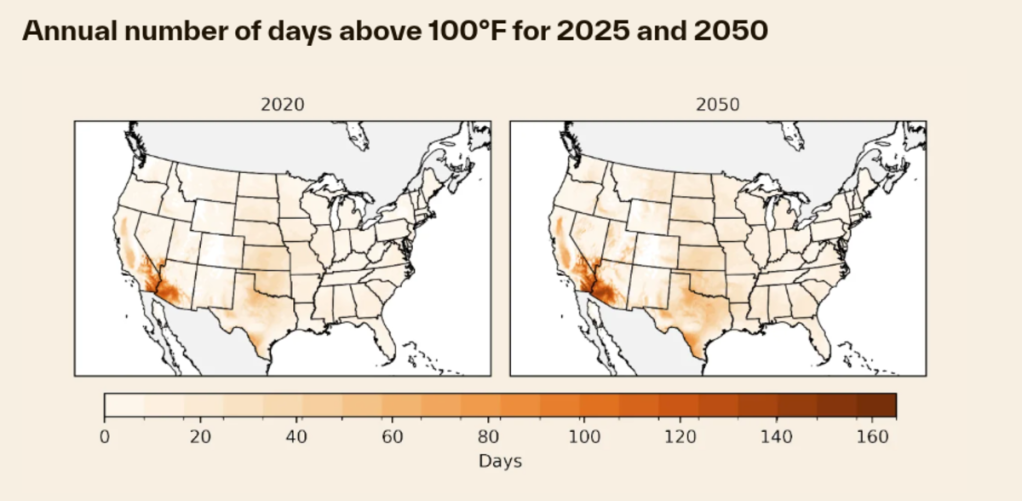

Audio By Carbonatix
Here’s something to think about — in just a few months, we’ll be closer to the year 2050 than 2000.
Though that future and the brave new world that awaits in it are hard to conceptualize now, there’s every reason to believe profound changes are on the way — and lots to worry about in Arizona.
It’s already hot here in the Grand Canyon State and always getting hotter. In fact, one recent analysis noted with some concern that in 2050, four of the five hottest counties in the nation will be in Arizona.
The study, created by the real estate information firm Cotality, predicted the average number of days counties will spend above three temperature thresholds in 2050 — days above 95 degrees, days above 110 and days above 120. Yuma County leads the nation in the first metric, with a forecasted 171 days above 95 degrees. Imperial County in California is second with 162 days at 95-plus. Rounding out the top five are La Paz County (155.9), Maricopa County (155.3) and Pinal County (146.9) — all in Arizona.
This year, make your gift count –
Invest in local news that matters.
Our work is funded by readers like you who make voluntary gifts because they value our work and want to see it continue. Make a contribution today to help us reach our $30,000 goal!
Cotality’s head of research and development, Anand Srinivasan, said the company used counties as a foundation for the study because they use lots of data inputs but are not too large to draw conclusions about the effects of heat.
The rankings were the same for the number of days with temperatures greater than 110 degrees, which is closer to what Valley residents might consider “extreme heat.” Yuma is predicted to see 65 such days of 110-degree heat — a 33% increase from today, according to the analysis. In populous Maricopa County, the annual number of 110-plus degree days is expected to increase by 39% to 46 days every year. While that projected figure is higher than the annual average in Phoenix, it’s less than recent record-setting years in 2024 (70 days) and 2023 (55).

Cotality
The study raises an obvious question: If Arizona is going to be that hot, will anyone want to live here?
Even as temperatures and extreme heat days have been climbing in recent years, the Valley’s housing market has seen a boom. Between 2016 and 2020, about 100,000 people moved to Arizona, the study said, with about 44% of them settling in Maricopa County, which is home to Phoenix.
“The fact that Phoenix, on a comparable basis, was more affordable to other large cities may have been a draw. But it brings about a different set of risks,” Srinivasan told Phoenix New Times in a phone interview. “What is the straw that breaks the camel’s back proverbially, if there is one? It’s nearly impossible to tell.”
He mentioned Florida’s insurance crisis, which resulted in more migration out of Florida as insurance companies denied coverage for properties at substantial risk to climate change and extreme weather, as an example of such a challenge.
As one might expect, a concern for the desert is water. In the next 25 years, water scarcity is expected to be a key issue for Arizona, which will lose 18% of its Colorado River water allocation in 2026 thanks to a drought the likes of which the Southwest hasn’t seen in 1,200 years. Arizona is also depleting its groundwater at alarming rates, and water scarcity has already limited homebuilding.

Cotality
“If temperatures increase too drastically, it will dull the attraction of sunshine and low taxes that brought people to Arizona in the first place,” Dr. Howard Botts, chief scientist at Cotality, said in a statement. “But adaptation is possible. With forward looking models and an understanding of how hot is too hot for certain construction choices or locations, we can create resilient communities across the American Southwest.”
Still, Cotality noted that even lesser-known parts of Arizona, like Yuma, are experiencing real estate growth. In Yuma, the company estimated that by July 2026, home prices will increase by about 4%, outpacing national price growth.
Some are still feeling bullish. About half of Phoenix’s housing inventory was purchased by investors in the first half of 2026, making the Valley the fourth-biggest market for property investors. Those buyers were mainly small-time landlords with fewer than 10 properties, while institutional investment decreased by 12%.
All signs point to our already-sizzling climate getting hotter, but it’s unclear whether those changes will spell doom for Arizona’s recent status as a popular living destination. While Arizona is attracting new residents, Cotality noted there’s already a trend of Arizonans leaving for cooler, cheaper states like Colorado or Texas. “These nearby states boast strong job markets, an array of natural resources, and cooler climes filled with plenty of sunshine,” the study said.
Time will tell if droves decide they can’t take the heat. But right now, so long as the water’s running and the lights are on, it seems to be business as usual in the desert.